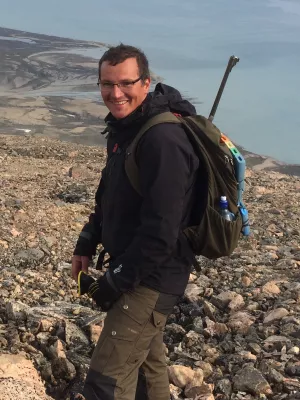
Marcin Jackowicz-Korczynski
Research engineer

Increased nitrous oxide emissions from Arctic peatlands after permafrost thaw
Author
Summary, in English
Permafrost in the Arctic is thawing, exposing large carbon and nitrogen stocks for decomposition. Gaseous carbon release from Arctic soils due to permafrost thawing is known to be substantial, but growing evidence suggests that Arctic soils may also be relevant sources of nitrous oxide (N2O). Here we show that N2O emissions from subarctic peatlands increase as the permafrost thaws. In our study, the highest postthaw emissions occurred from bare peat surfaces, a typical landform in permafrost peatlands, where permafrost thaw caused a fivefold increase in emissions (0.56 ± 0.11 vs. 2.81 ± 0.6 mg N2O m-2 d-1). These emission rates match those from tropical forest soils, the world's largest natural terrestrial N2O source. The presence of vegetation, known to limit N2O emissions in tundra, did decrease (by ∼90%) but did not prevent thaw-induced N2O release, whereas waterlogged conditions suppressed the emissions. We show that regions with high probability for N2O emissions cover one-fourth of the Arctic. Our results imply that the Arctic N2O budget will depend strongly on moisture changes, and that a gradual deepening of the active layer will create a strong noncarbon climate change feedback.
Department/s
- Dept of Physical Geography and Ecosystem Science
- MERGE: ModElling the Regional and Global Earth system
- BECC: Biodiversity and Ecosystem services in a Changing Climate
Publishing year
2017-06-13
Language
English
Pages
6238-6243
Publication/Series
Proceedings of the National Academy of Sciences of the United States of America
Volume
114
Issue
24
Document type
Journal article
Publisher
National Academy of Sciences
Topic
- Climate Research
- Meteorology and Atmospheric Sciences
Keywords
- Arctic soils
- Climate change
- Greenhouse gases
- Nitrogen
- Tundra
Status
Published
ISBN/ISSN/Other
- ISSN: 0027-8424

